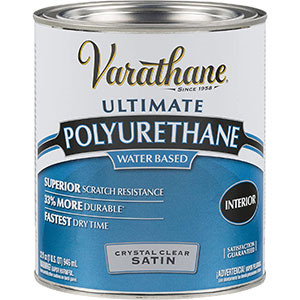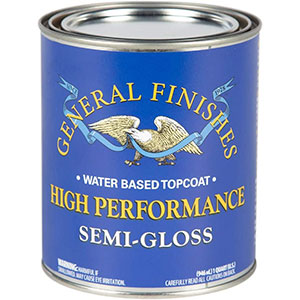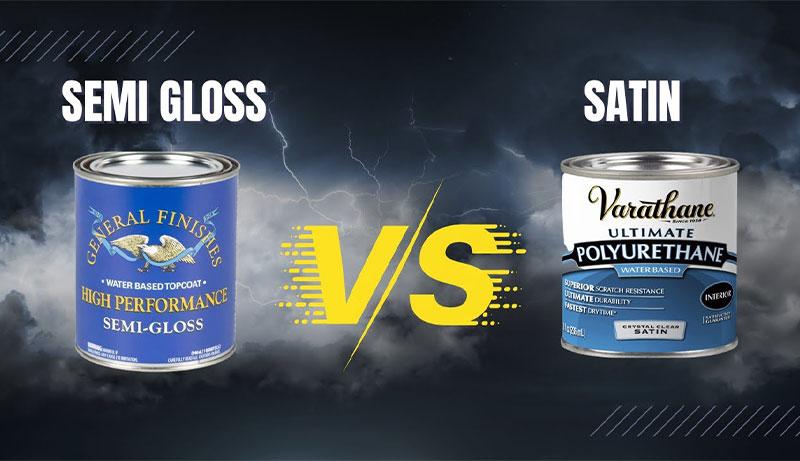As an affiliate, we may earn a commission from qualifying purchases. We get commissions for purchases made through links on this website from Amazon and other third parties.
The sheen level is one of the key considerations when choosing a finish for your hardwood floors or other wood surfaces. While shiny surfaces may be stunning to the sight, they are not always the best option.
Given that satin and semi-gloss polyurethane finishes are the two most common choices, you might need to choose between them when it comes to polyurethane finishes. Overall, there are matte, satin, semi-gloss, and high gloss polyurethane treatment possibilities.
In order to assist you make a better decision for your upcoming project, this article will compare these various polyurethane varieties.
| Image | Product Name | Editor's Rating | Price |
|---|---|---|---|
 | Satin | Check Price | |
 | Semi Gloss | Check Price |
What is Satin Polyurethane?
In comparison to high-gloss finishes, a satin polyurethane creates a surface with a medium to low sheen that conceals dirt and flaws better.
The reason for this subdued brilliance is because satin finishes have more flattening paste than semi-gloss or high-gloss finishes, which results in less glare.
Due to the fact that it won’t draw attention to flaws more noticeably, this polyurethane finish is suitable for hardwood floors.
Additionally, compared to high gloss polyurethane flooring, satin polyurethane floors are simpler to maintain.
What is Semi-Gloss Polyurethane?
Compared to satin and matte treatments, this polyurethane finish has a higher shine. However, it lacks the high gloss poly’s lustre.
Semi-gloss floors reflect more light than satin floors because they have a reasonable sheen that falls between satin and high gloss finishes. Such floors have a more formal appearance because to their more glossy shine, which also brings out the beauty of the wood.
You get decent protection and a modest sheen with a semi-gloss poly, which also tends to be quite protective of hardwood floors.
Comparing Satin Vs Semi-Gloss Polyurethane Finishes
In this section, the sheen level, durability, VOC levels, use, and upkeep of satin and semi-gloss polyurethane coatings are compared.
Sheen levels of semi-gloss versus satin polyurethane
Any finish’s sheen level describes how much light the surface reflects. The most reflective finishes in this situation are high-gloss, followed by semi-gloss, satin, and matte, in that order.
The luster of a high-gloss polyurethane coating is around 70%. Unfortunately, this finish is quite slippery and unsuitable for houses since it might occasionally cause sliding and associated mishaps due to the sheen level.
To visualize a high gloss surface, think gym floors and bowling alleys. In terms of sheen level or reflection, a semi-gloss finish falls below high gloss with around a 55% luster.
For people who enjoy the striking appearance of polished surfaces without the incredibly slippery feeling of gloss polyurethane, semi-gloss paint is appropriate. Semi-gloss finishes are sufficient for usage in your living areas even if they are still noticeably glossy.
A matte finish offers 40% luster on average. It is the material of choice for most domestic applications and complements hardwood floors in all tones of wood, from light to dark.
Because it is convenient, experts advise using it, and customers prefer it to other solutions.
Final verdict: Satin is more favored even if semi-gloss is shinier.
Durability of polyurethane satin finish versus semi-gloss
The different polyurethane coatings are quite similar in terms of longevity. Some contend that they are technically equivalent in terms of durability because of this.
To determine which polyurethane finish is more durable than the other, it is simpler to take into account whether it is oil- or water-based.
Generally speaking, an oil-based polyurethane alternative outlasts a water-based one. Since it is the winner in terms of durability, this finish is great for high-traffic parts of the house.
Given the sheen level, satin and semi-gloss polyurethane could have the same grade. Semi-gloss water-based polyurethane is equally as resilient as satin water-based polyurethane in terms of durability.
Since all polyurethane finishes use the same fundamental composition, both semi-gloss and satin polyurethane are equally durable. But compared to the satin option, the shinier semi-gloss finish will eventually reveal wear more obviously.
While satin and semi-gloss polyurethane may eventually get damaged, satin will do a better job of concealing the flaws.
The result is a draw.
Scratch resistance of wood finishes: satin vs. semi-gloss
Although satin polyurethane often conceals surface flaws better than semi-gloss poly, sharp objects can damage it more readily.
Because they reflect light, dents and scratches are more noticeable on semi-gloss surfaces. However, a semi-gloss polyurethane finish will be more scratch-resistant than a satin one against nicks from pointed objects.
Conclusion: Semi-gloss poly wins.
VOC levels for polyurethane semi-gloss versus satin
Given that polyurethane coatings use the same fundamental formula regardless of the sheen level, semi-gloss and satin finishes both contain the same quantity of volatile organic compounds (VOCs).
Only the VOC levels vary among the various bases. So, compared to an oil-based alternative, a water-based wood finish would often have lower VOC levels.
Additionally, compared to an oil-based solution, a solvent-based choice could include a lot more volatile organic chemicals.
The result is a draw.
Practicality of semi-gloss versus satin polyurethane
Even while a high gloss polyurethane finish is eye-catching and perhaps more attractive, it might not be useful to use at home. The smooth surface is quite slick and may frequently result in accidents.
The lack of popularity of high gloss poly for household applications is explained by this. A semi-gloss poly, on the other hand, is a little less slippery than a gloss alternative and is hence more common for residences.
Of these finishes, satin urethanes are frequently used. It has a very subtle gloss, making it perfect for living areas. In other words, it doesn’t look to be completely flat and it’s not too slick for safe foot traffic.
Additionally, scratches and other surface flaws are better hidden by satin urethanes. It is a more sensible alternative than a glossier one because of this characteristic.
Final conclusion: A more practical option is satin varnish, paint, or poly.
Satin vs semi-gloss wood finishes: upkeep
A polyurethane finish’s surface will reveal dirt and debris more visibly the more gloss it has.
So even if the amount of dirt on semi-gloss and satin polyurethane surfaces may be equal at any one time, the semi-gloss surface will seem dirtier.
More light is reflected by the glossier surface, increasing the visibility of dirt and debris. Depending on the illumination in the area, scuff marks, animal prints, and footprints may also stand out more.
Because of this, semi-gloss poly will need more upkeep than satin paint or poly. The latter, however, will be considerably better at concealing scuffs or footprints that may have needed rapid repair on a glossier surface.
But take note that a polyurethane-coated wood surface is easy and hassle-free to clean. Only the debris on the wood surface has to be picked up with a vacuum.
It may be made spotless by using a moist towel or mop to clean it. You should avoid using a cloth or mop that is sopping wet.
Since the glossy surface won’t absorb much water, you don’t want extra moisture to penetrate into the wood’s crevices where it might cause warping.
Similar to how it is simple to remove polyurethane from hands, all you need to do is use mineral spirits or denatured alcohol and massage your hands together.
Conclusion: Semi-gloss polyurethane takes extra upkeep to seem fresh and clean.
Final Conclusion
It doesn’t matter what kind, polyurethane is a common finish for flooring and other wood projects since it creates a durable topcoat and gives the surfaces a long-lasting polish. The products it is applied on may have a much longer service life as a result.
However, understanding how the finishes differ will greatly aid in making a better choice for your upcoming woodworking job.
When choosing between satin and semi-gloss, two of the most popular poly kinds, it helps to know where to look.
